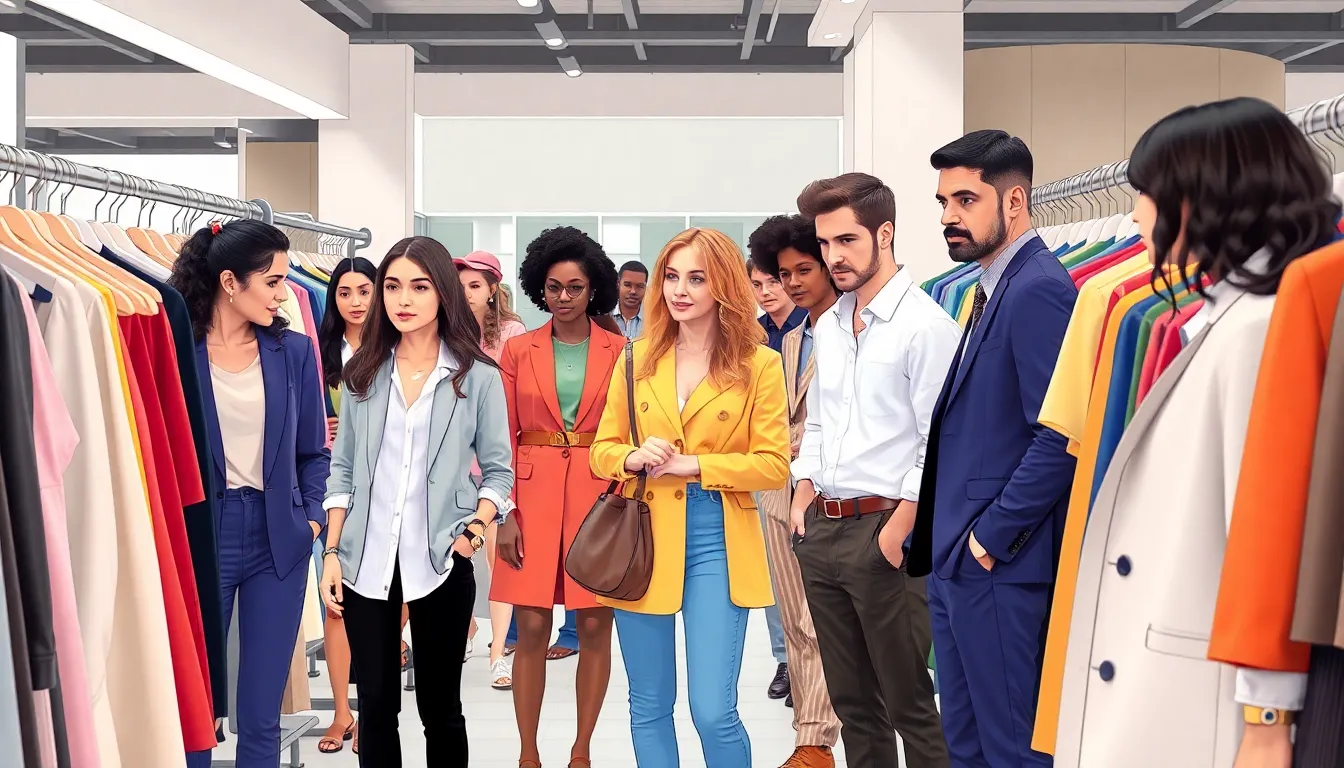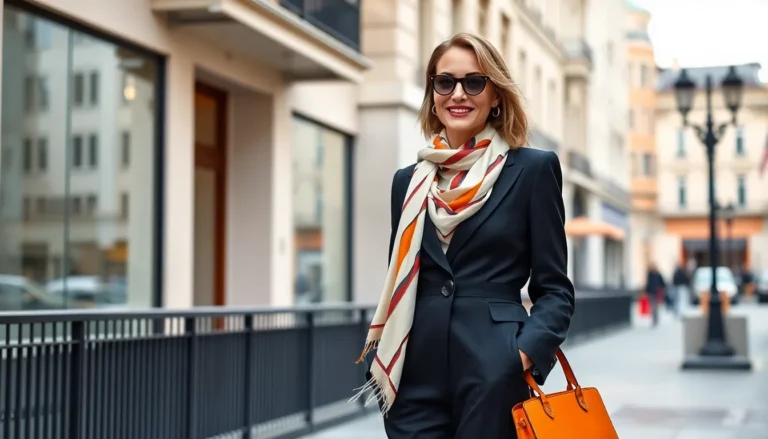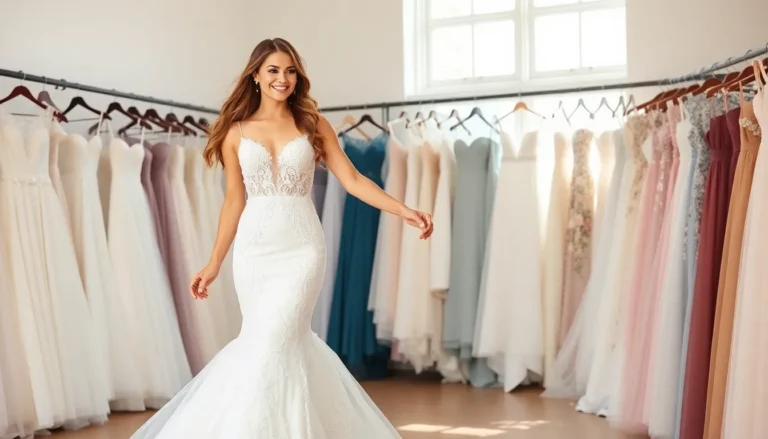In a world where time is money and fashion waits for no one, ready-to-wear clothing swoops in like a superhero in a cape. Forget the days of endless fitting sessions and the dreaded “I’ll just lose five pounds first.” With ready-to-wear, style meets convenience, letting anyone strut their stuff without breaking a sweat.
Ready To Wear Clothing
Ready-to-wear clothing refers to mass-produced garments available in standard sizes. This category includes items designed for immediate purchase without extensive customization. Brands create collections that reflect current fashion trends, enabling quick access to stylish outfits.
The convenience of ready-to-wear lies in its affordability and wide availability. Consumers find these pieces in various retail outlets, from high-end boutiques to chain stores. Diverse styles cater to different tastes and occasions, making it possible for individuals to dress appropriately for both casual and formal events.
Individuals benefit from the reduced time and effort associated with shopping for ready-to-wear. After selecting a garment, wearers can enjoy it right away without waiting for tailoring. This immediate gratification means less frustration and more enjoyment in the fashion experience.
Garment construction typically involves standardized techniques and fabrics, increasing efficiency in production. This approach allows brands to lower costs, passing savings to consumers. Consequently, ready-to-wear often attracts price-sensitive shoppers looking for quality clothing options.
Trendy designs and consistent releases keep consumers engaged, creating a dynamic marketplace. Brands frequently update their collections, encouraging repeat visits from customers eager to discover the latest styles. Fashionable pieces available at a moment’s notice align perfectly with today’s fast-paced lifestyle.
Benefits of Ready to Wear Clothing

Ready-to-wear clothing offers numerous advantages that streamline fashion choices. It provides easy access to styles that fit various lifestyles.
Affordability
Affordability stands out as a significant benefit. Ready-to-wear garments, produced in larger quantities, often come with lower price points. Brands can reduce production costs and pass savings on to consumers. Many retailers offer trendy options at competitive prices, making fashionable attire accessible to a broader audience. Seasonal sales and promotions frequently enhance the attraction, enabling shoppers to find quality pieces without breaking the bank. This accessibility encourages individuals to expand their wardrobe with diverse options without financial strain.
Convenience
Convenience plays a crucial role in the appeal of ready-to-wear clothing. Shoppers enjoy the immediate availability of items designed to fit standard sizes, eliminating lengthy fitting sessions. Buying clothes becomes a quick and enjoyable experience at various retail outlets. Online shopping also adds to this convenience, allowing consumers to browse and purchase from the comfort of their homes. Fast delivery options ensure that new outfits arrive promptly, making wardrobe updates seamless. This accessibility aligns perfectly with busy lifestyles, enabling individuals to dress appropriately for any occasion without hassle.
Types of Ready to Wear Clothing
Ready-to-wear clothing encompasses various styles suitable for different occasions. Two main categories are casual wear and formal wear.
Casual Wear
Casual wear includes everyday attire designed for comfort and ease. Styles often feature relaxed fits and comfortable fabrics like cotton and jersey. Popular items in this category comprise t-shirts, jeans, and casual dresses. Many brands create versatile pieces that allow individuals to mix and match effortlessly, ensuring they can adapt their outfits for various settings. Athleisure also falls under casual wear, combining functionality with style for active lifestyles. Wearing these garments enables individuals to embrace comfort without sacrificing fashion.
Formal Wear
Formal wear serves as the go-to option for special occasions and professional settings. Tailored suits, elegant dresses, and sophisticated separates characterize this category. Fabric choices often include silk, satin, and high-quality wool, which enhance the overall aesthetic. Many brands focus on creating timeless pieces suitable for events like weddings, corporate functions, and galas. Accessories play a critical role in completing formal outfits, adding distinction and personal flair. Those selecting formal wear enjoy the confidence that comes with a polished look while adhering to dress codes seamlessly.
Key Brands in Ready to Wear Market
Top brands dominate the ready-to-wear market by offering stylish options that cater to diverse consumers. Zara stands out for its fast fashion model, which quickly translates runway styles into wearable collections available in stores. H&M excels in affordability, featuring a wide range of trendy garments that appeal to budget-conscious shoppers.
Nike leads the athleisure category, combining functionality and fashion in its ready-to-wear offerings. Lululemon provides high-quality activewear, focusing on both performance and aesthetic. Each brand emphasizes inclusivity by extending size ranges, ensuring more customers find suitable options.
Gap is known for its classic American style, offering versatile pieces suitable for casual wear and office environments. Uniqlo specializes in minimalist designs, featuring innovative fabrics that enhance comfort and style. These brands provide consumers with easy access to their preferred aesthetics.
Luxury brands also participate in the ready-to-wear segment. Chanel delivers timeless elegance, while Gucci blends eclectic details for bold self-expression. Their collections often reflect high-fashion trends while remaining accessible to a broader audience.
Online presence enhances brand visibility and accessibility. ASOS captivates shoppers with an extensive range of ready-to-wear items, while Amazon Fashion continues to expand its clothing selections. These platforms make browsing effortless, with options for quick delivery.
Sustainability trends influence many brands in the market. Reformation emphasizes eco-friendly practices, appealing to environmentally-conscious consumers. Responsible sourcing and production practices are increasingly prioritized among established and emerging labels alike.
These key brands shape the ready-to-wear clothing landscape, making fashion attainable for various lifestyles and preferences. Each brand plays a significant role in diversifying choices for consumers looking for immediate and stylish apparel.
Trends in Ready to Wear Clothing
Current trends in ready-to-wear clothing reflect a shift towards sustainability and inclusivity. Sustainability initiatives have gained traction, with brands adopting eco-friendly materials and ethical manufacturing processes. Many consumers prioritize purchasing from companies that demonstrate environmental responsibility.
Athleisure continues to dominate the market as a versatile choice for both casual wear and workout attire. This trend blurs the line between fashion and fitness, allowing individuals to wear stylish athletic clothing in various settings. Athleisure garments often feature innovative fabrics that provide comfort and function.
Gender-neutral clothing is also on the rise, emphasizing inclusivity and breaking traditional fashion norms. Many brands are expanding their offerings to encompass styles that appeal to a broader audience, catering to diverse fashion preferences. This move reflects changing societal views on gender and identity.
Bold prints and vibrant colors have made a significant comeback in ready-to-wear collections. Attention-grabbing patterns enhance individuality and self-expression, allowing wearers to stand out. Mixing and matching these eyecatching pieces has become commonplace, encouraging creativity in outfit combinations.
Access to fashion through digital platforms remains a vital trend. Online shopping offers convenience and a vast array of choices, making it easy for consumers to find their preferred styles. Many brands enhance their online presence through social media, engaging customers with interactive content that showcases the latest collections.
Personalization is another emerging trend, with retailers utilizing technology to offer customized shopping experiences. Data-driven insights allow brands to understand consumer preferences better, resulting in tailored recommendations. This approach enhances customer satisfaction and fosters loyalty.
Understanding what trends resonate with consumers helps ready-to-wear brands adapt quickly. Market responsiveness shapes future collections, ensuring styles remain relevant and desirable. These trends collectively influence what ready-to-wear clothing embodies in today’s fashion landscape.
Conclusion
Ready-to-wear clothing stands as a testament to the evolution of fashion in a fast-paced world. Its blend of convenience affordability and style offers a practical solution for individuals seeking to express themselves without the hassle of customization. As trends shift towards sustainability and inclusivity brands are responding by embracing eco-friendly practices and diverse designs.
The ongoing popularity of athleisure and the rise of gender-neutral clothing reflect a broader cultural shift making fashion accessible to everyone. With the support of digital platforms and social media brands continue to engage consumers effectively. This dynamic landscape ensures that ready-to-wear clothing remains a vital part of modern wardrobes catering to various tastes and lifestyles.




